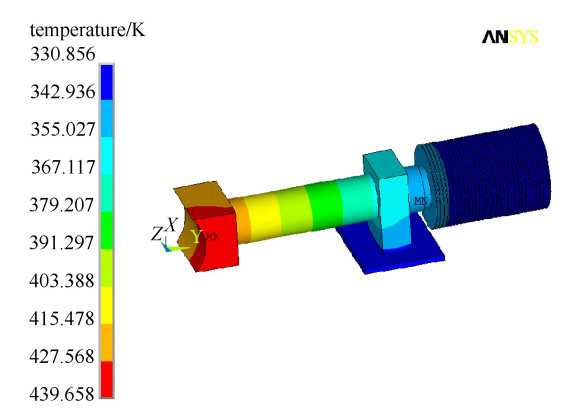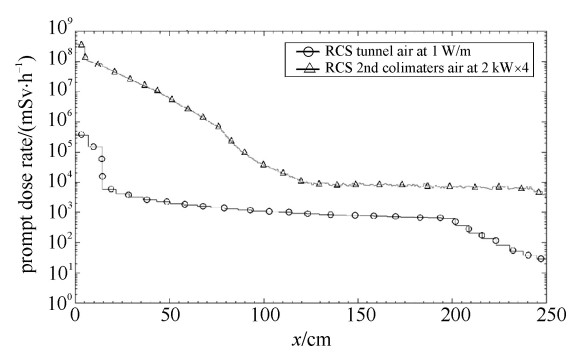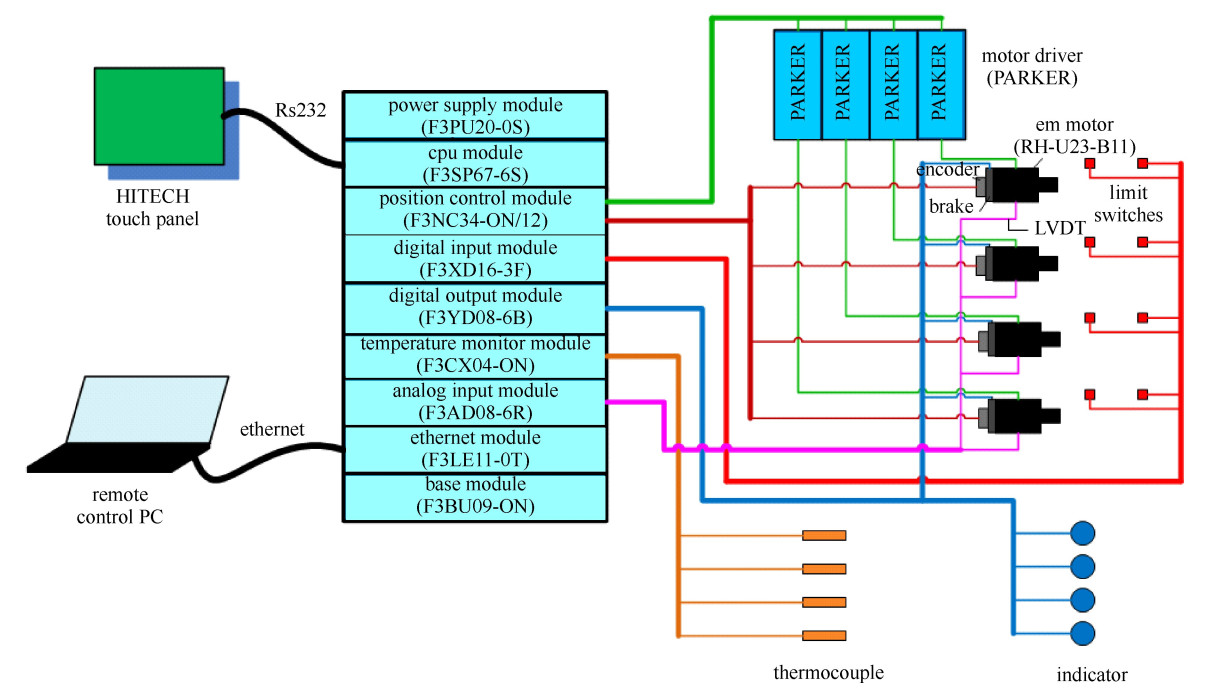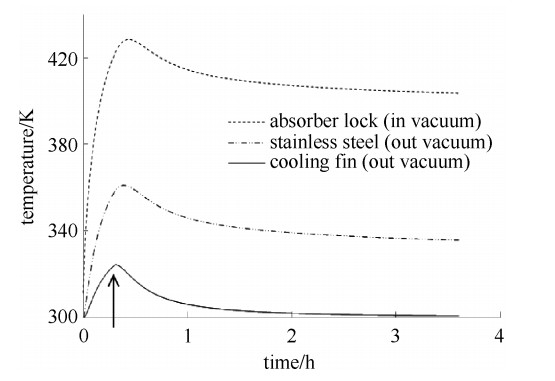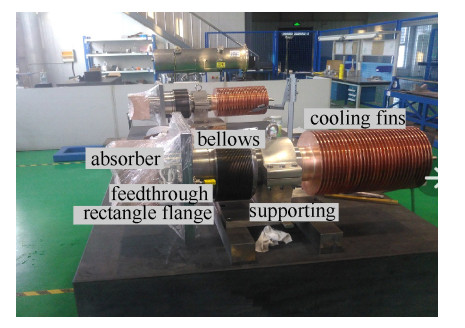Cooling design of secondary collimator absorbers at CSNS/RCS
-
摘要: 作为CSNS/RCS横向束流准直系统的关键部件,次级准直器用于吸收经主准直器散射后不在预定轨道的束晕粒子,其工作原理决定了该设备要求满足强辐射环境下的稳定性、超高真空及高定位精度等要求。基于主准直器的设计及研制经验,对次级准直器结构方案及控制系统进行详细设计。针对关键部件吸收体,结合辐射防护分析结果,考虑水冷降温的方式,设计了控制程序,通过有限元分析软件ANSYS对其进行瞬态热分析,保证吸收体设计的可行性。
-
关键词:
- CSNS/RCS次级准直器 /
- 吸收体 /
- 辐射防护 /
- 瞬态热分析 /
- 控制系统
Abstract: As the key components of rapid cycling synchrotron of China Spallation Neutron Source (CSNS/RCS) collimation system, secondary collimators are used to absorb the unconstrained halo particles which are scattered by primary collimator's scrapers, they should meet the special requirements of high stability, ultra-high vacuum, high positioning accuracy and so on.Based on the design and manufacturing experience of primary collimator, the absorber which is the key part of secondary collimators is designed by using ANSYS and FLUKA, and cooling by water pipe is adopted.Combined with the control system, transient analysis has been done to ensure the feasibility of the design.-
Key words:
- CSNS/RCS secondary collimator /
- absorber /
- radiation protection /
- transient analysis /
- control system
-
表 1 风扇风速为5 m/s时,排放到环境中的活化核素与RCS隧道保持负压的排风(1次/h)的活化核素比值
Table 1. Ratio of the active nuclide at the air flow speed of 5 m/s
mass number element proton number half life T saturate activity concentrations S(reduced) total activate nuclide with 6000 h operation each year activity ratio between RCS 2nd collimators’air with funs’ running and RCS tunnel 3 H 1 3.89×108 3.80×10-8 2.12×102 1.60×10-4 6 He 2 8.07×10-1 4.01×10-1 2.24×109 4.25×10-1 8 Li 3 8.38×10-1 1.32×100 7.38×109 4.11×10-1 7 Be 4 4.60×106 9.80×10-7 5.47×103 1.60×10-4 8 Be 4 6.71×10-17 1.28×10+1 7.17×1010 3.03×100 8 B 5 7.70×10-1 4.17×10-1 2.33×109 4.42×10-1 12 B 5 2.02×10-2 9.01×100 5.04×1010 2.63×100 13 B 5 1.74×10-2 7.49×10-1 4.18×109 2.68×100 10 C 6 1.93×101 7.33×10-2 4.09×108 2.07×10-2 11 C 6 1.22×103 6.03×10-3 3.37×107 4.85×10-4 14 C 6 1.81×1011 1.19×10-10 6.66×10-1 1.60×10-4 13 N 7 5.98×102 3.33×10-2 1.86×108 8.26×10-4 16 N 7 7.13×100 1.22×10-1 6.84×108 5.50×10-2 14 O 8 7.06×101 4.15×10-2 2.32×108 5.79×10-3 15 O 8 1.22×102 6.58×10-2 3.67×108 3.42×10-3 39 Cl 17 3.34×103 5.85×10-5 3.27×105 2.79×10-4 37 Ar 18 3.03×106 3.79×10-8 2.12×102 1.60×10-4 39 Ar 18 8.48×109 2.05×10-11 1.14×10-1 1.60×10-4 41 Ar 18 6.56×103 9.95×10-5 5.56×105 2.20×10-4 -
[1] Wang Sheng, Fang Shouxian, Fu Shinian, et al. Introduction to the overall physics design of CSNS accelerators[J]. Chinese Physics C, 2009, 33(2): 1-3. [2] Wei Tao, Qin Qin. Design of the two-stage collimation system for CSNS/RCS[J]. Nucl Instr Meth Phys Res A, 2006, 566(2): 212-217. [3] 魏涛. 中国散裂中子源快循环同步加速器束损研究[D]. 北京: 中国科学院高能物理研究所, 2008: 53-55.Wei Tao. Beam loss studies on the rapid cycling synchrotron of China Spallation Neutron Source. Beijing: Institute of High Energy Physics, Chinese Academy of Sciences, 2008: 53-55 [4] Wang Na, Wang Sheng, Huang Nan, et al. The design of beam collimation system for CSNS/RCS[C]//Proceedings of HB2010. 2010: 572-575. [5] Accelerator Group. JAERI/KEK Joint Project Team. Accelerator technical design report for J-PARC[R/OL]. http://JAERI-TECH-2003-044,2003. [6] Yamamoto K, Okazaki M, Hirooka Y, et al. Present status of beam collimation system of J-PARC RCS[C]//Proceedings of EPAC 2006. 2006: 3200-3202. [7] Yamamoto K, Kinsho M. Development of the collimator system for the 3GeV rapid cycling synchrotron[C]//Proceedings of 2005 Particle Accelerator Conference. 2005: 1365-1367. [8] 邹易清, 康玲, 屈化民, 等. 中国散裂中子源快循环同步加速器主准直器的设计与研究[J]. 强激光与粒子束, 2013, 25(3): 741-745. doi: 10.3788/HPLPB20132503.0741Zou Yiqing, Kang Ling, Qu Huamin, et al. Chromatic correction for CSNS/RCS and nonlinear effects of chromaticity sextupoles. High Power Laser and Particle Beams, 2013, 25(3): 741-745 doi: 10.3788/HPLPB20132503.0741 [9] 邹易清. 中国散裂中子源主准直器的设计与研制[D]. 北京: 中国科学院高能物理研究所, 2013: 15-20.Zou Yiqing. Design and development of the primary collimator for CSNS. Beijing: Institute of High Energy Physics, Chinese Academy of Sciences, 2013: 15-20 [10] 吴青彪. 中国散裂中子源的感生放射性研究[D]. 北京: 中国科学院高能物理研究所, 2014: 119-125.Wu Qingbiao. Study on induced radioactivity of China Spallation Neutron Source. Beijing: Institute of High Energy Physics, Chinese Academy of Sciences, 2014: 119-125 -





 下载:
下载:


